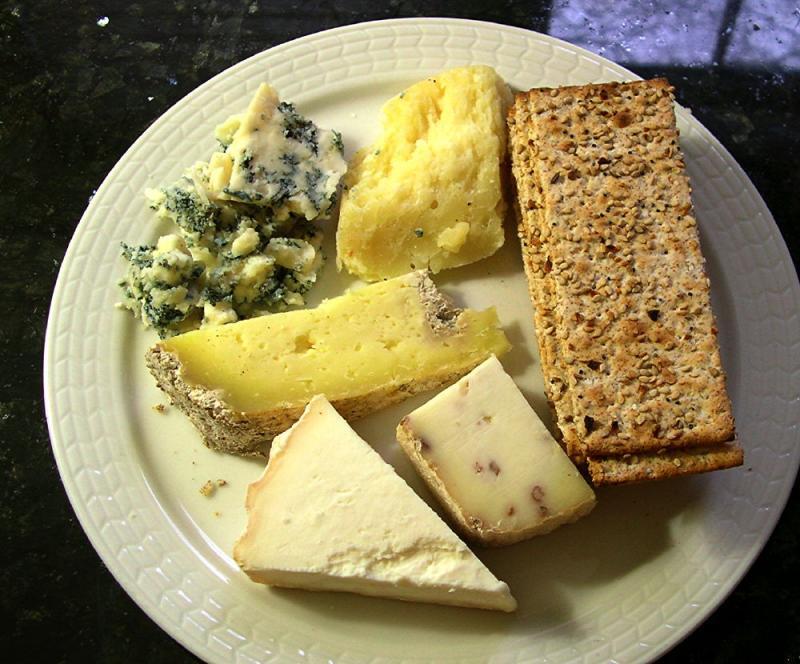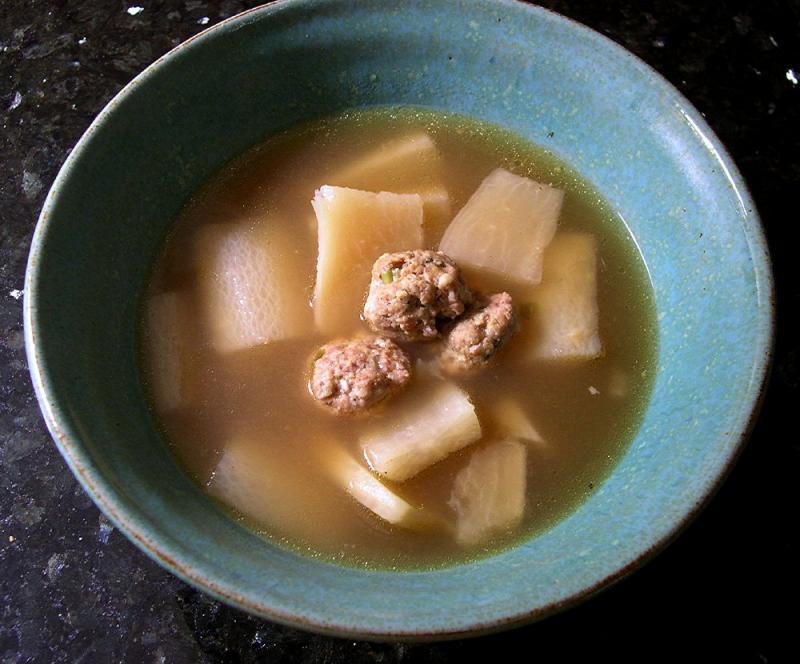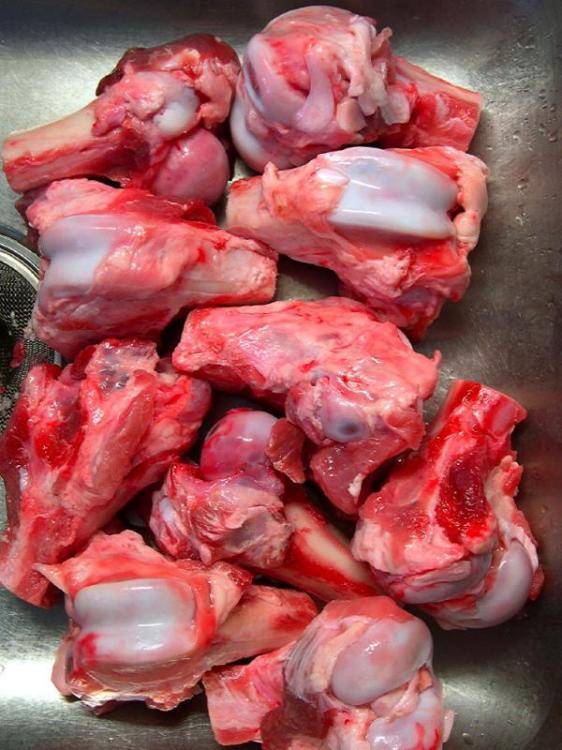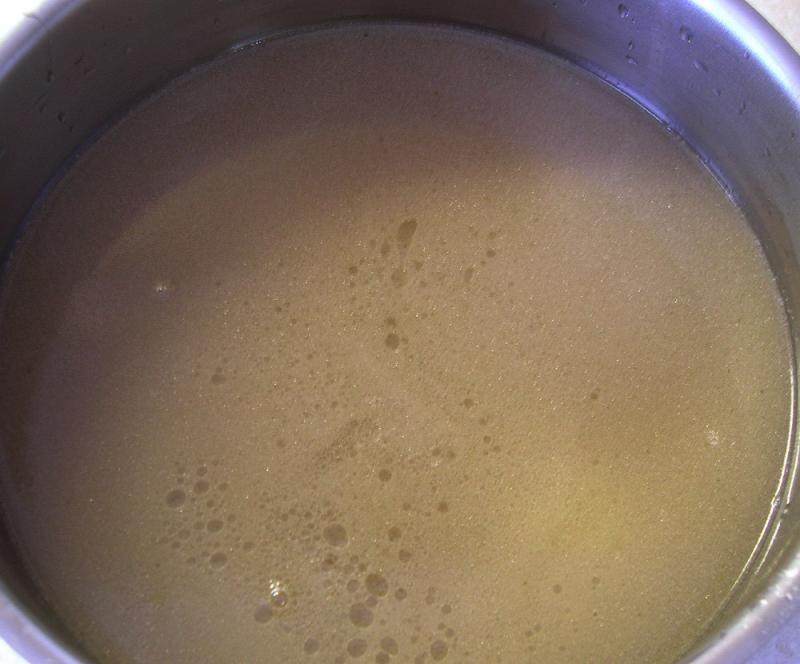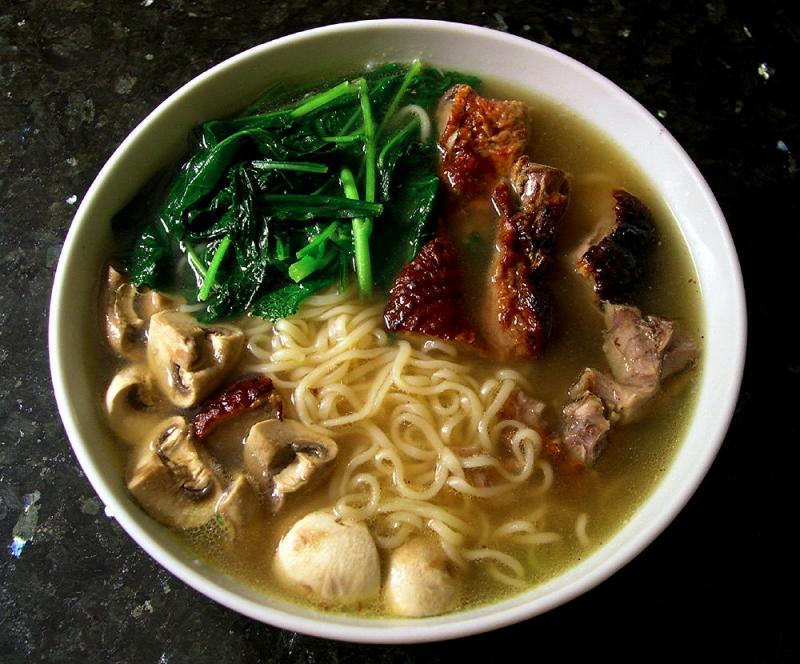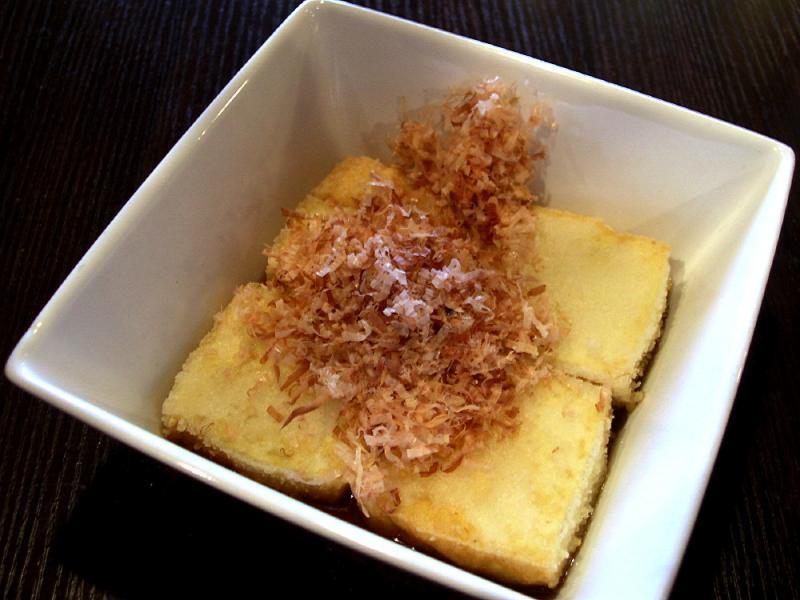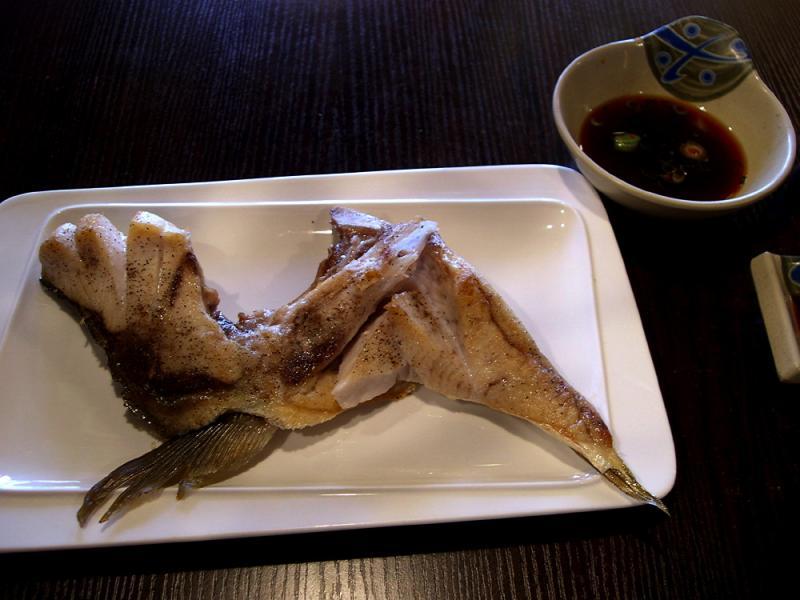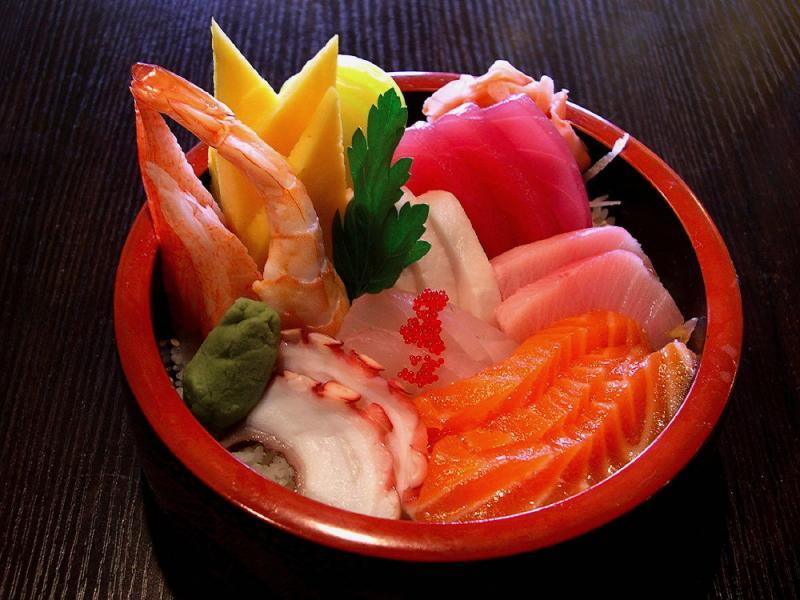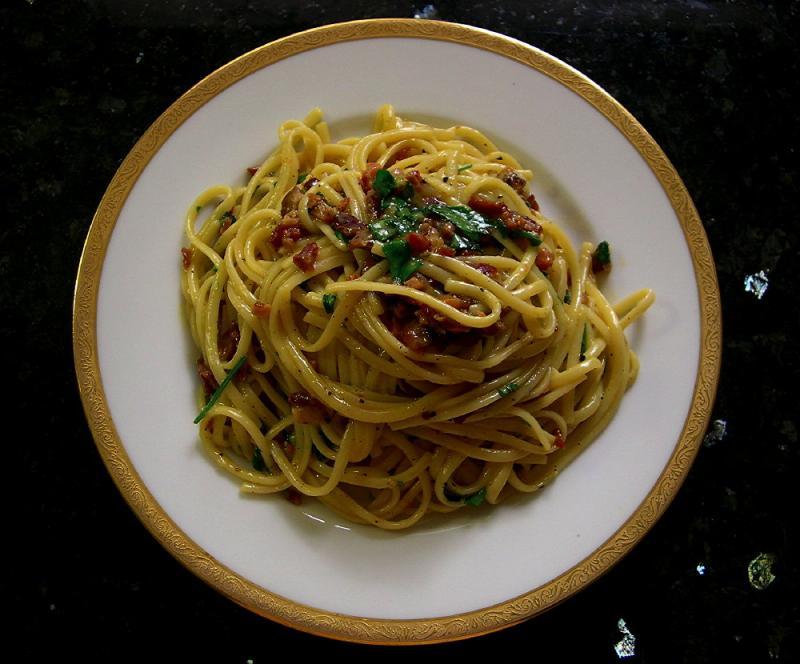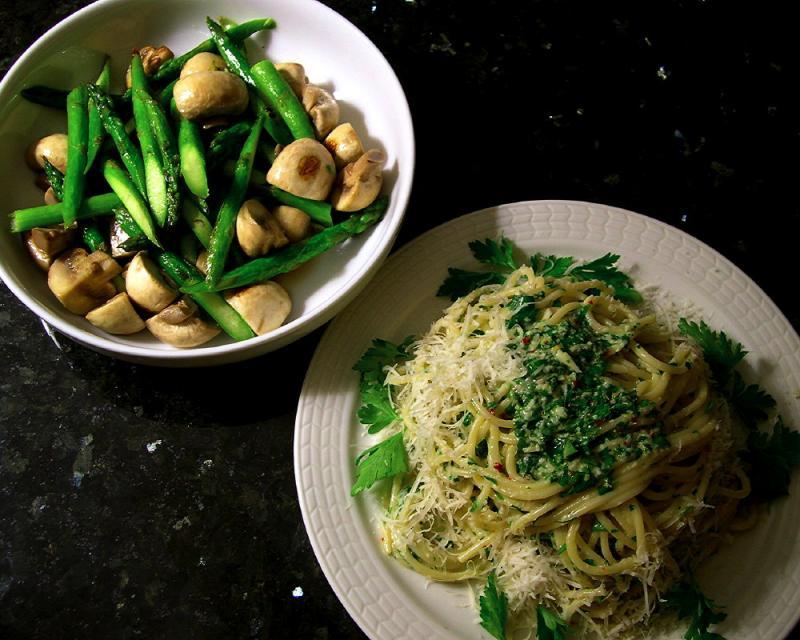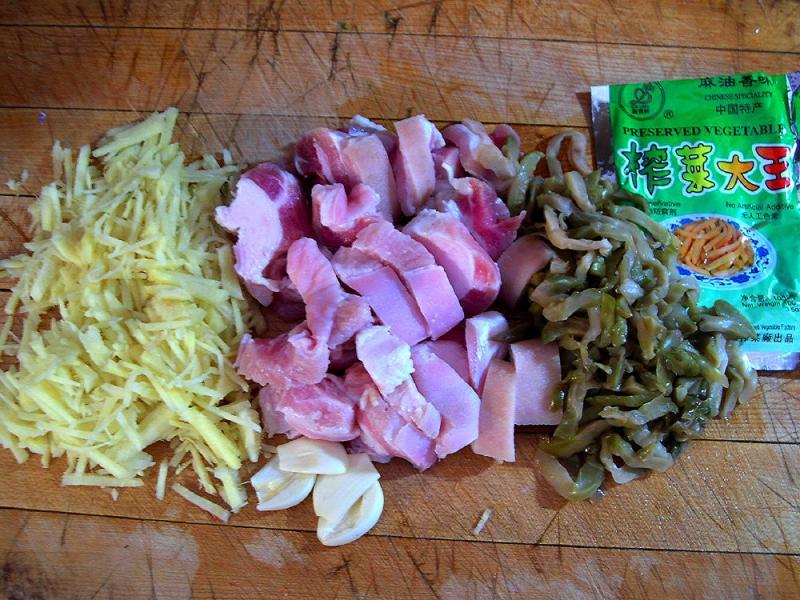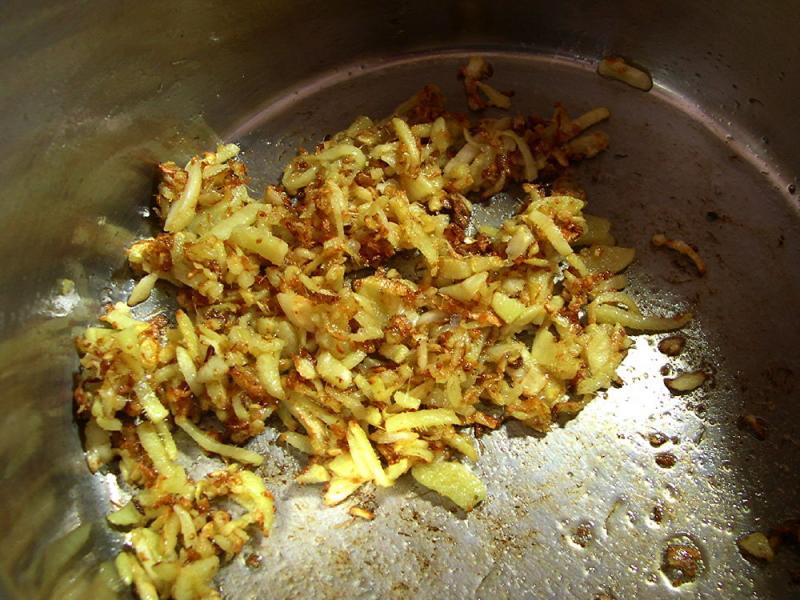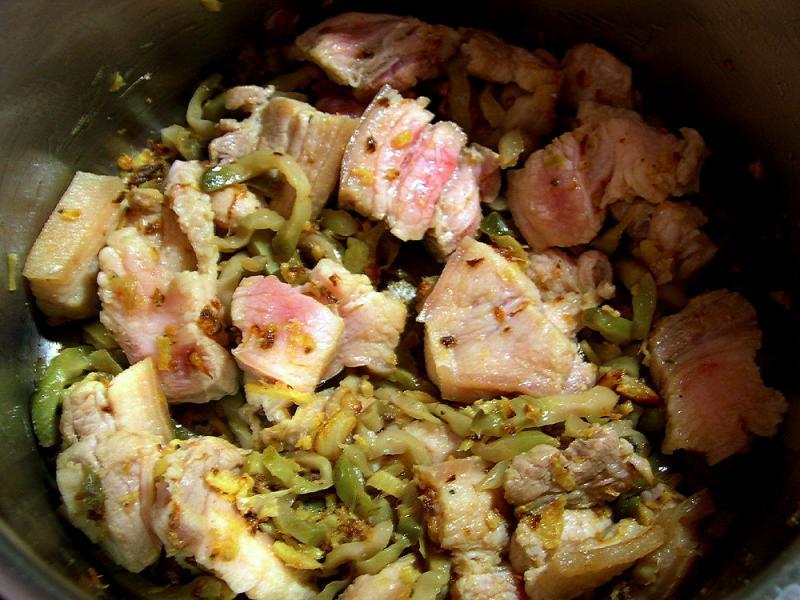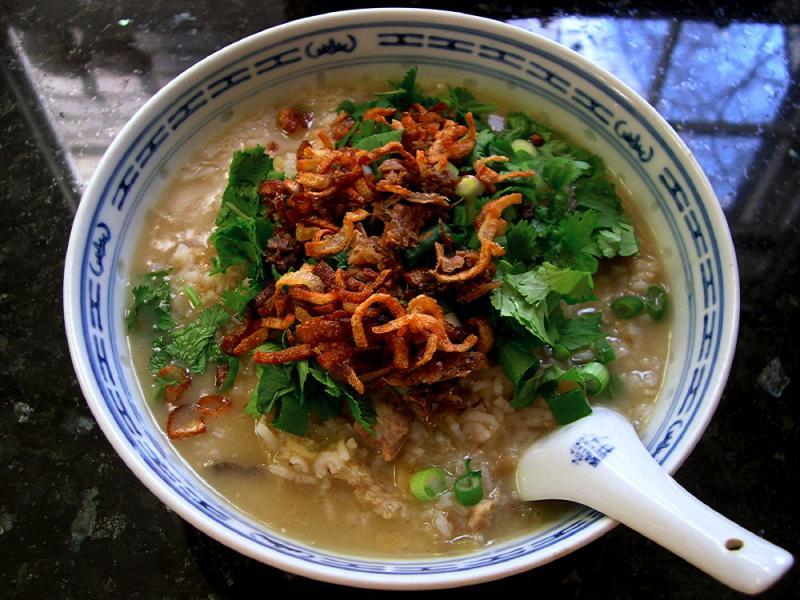-
Posts
3,810 -
Joined
-
Last visited
Content Type
Profiles
Forums
Store
Help Articles
Everything posted by huiray
-
Like many (but not all) folks who grew up in SE Asia, I find the utter revulsion to the smell of durian that is widespread amongst other folks to be...weird. It's a strong smell, yes, but an utterly delicious smell. Heh. (Both taste and smell will vary depending on the durian and the ripeness - there are many subspecies/varieties/cultivars of durians; it is not a monolithic fruit) Another type of foodstuff which seems to be repulsive to many (but again, not all) Occidental people is Chinese/Cantonese salted fish - especially the lesser grades of the stuff. It can be pungent in smell but is nicely savory to me - except for the worst examples. Another acquired taste/smell, perhaps. I once asked a Chinese restauranteur here in the USA (in Indy, to be precise) if she had some salted fish and if she could whip up a plate of steamed chopped salted fish and pork mince - and she told me in no uncertain terms that she did not have any salted fish in the restaurant and would never put any such dish on the menu because people (mainly Caucasian at this place) would flee from the place if such a dish were to be brought out. Curiously, some folks also seem to have a revulsion to dried shrimps/prawns (har mai; 蝦米) especially when cooked. Curious. It smells and tastes delicious to me. I don't usually eat cheese (or much of it, anyway) but find the blue cheeses (Gorgonzola, Stilton, etc) to be strong in aroma but pleasantly savory nonetheless and very tasty - although I find that eating a little is sufficient rather than huge chunks of it. For myself it seems to be more the case that if something smells really bad to me I tend not to eat it and if I do don't really like it - and off the top of my head I can't think of a contrary example where I find something repulsive in smell but delicious in taste... Badly prepared kidney, for example, that smells of fetid urine - I back away from it... I'm sure there are some racial genotype influences on olfactory reception and perception - cultural, too, no doubt... Including how people of one race "smell" to someone from another race. I'm speaking in broad generalities here.
-
A cheese plate for lunch a few days ago: Whole-grain seeded Lavash crackers; then going clockwise - Rustica alle Noci, Toscana, Polkton Corners, Bohemian Blue, Caso Bolo Mellage.
-
Early breakfast today: Pork meatballs & daikon in peppery pork stock. The soup started two days before from these: which were parboiled and washed (but quite a lot of blood/myoglobin-containing residues remained underneath the large lumps and the caps & in the marrow & other tissues) then simmered/boiled w/ a few slices of ginger and some sea salt for a total of maybe about 10 hrs or thereabouts. After scooping off most of the liquid fat (lard) still on top, fishing out the pieces and filtering through cheesecloth the resulting broth looked like this: (see here for further discussion of clear versus milky [pork] stocks) The soup was made with sliced peeled daikon; meatballs formed using ground pork, andouille sausage meat, chopped scallions and a good dash of light soy sauce; and loads of freshly ground white (NOT black) pepper, maybe about 2-3 heaped tablespoons worth. Left overnight on the stove to deepen & meld further.
-
Early breakfast yesterday: Myojo Chukazanmai Oriental Flavor ramen (this one) w/ fresh (hydroponic) young Tuscan kale, quartered white mushrooms & Chinese roast duck.
-
...and by "Asian" you mean...what, exactly? Turkish soups? Persian or Pakistani or Tukmenistani soups? If you mean Chinese soups, why not say so? As for soups like Bird's Nest Soup sans any fat at all - I don't think of it that way . I would not think it defective if there were some fat present in it.
-
That's a nice spread, dcarch. Perhaps you might consider not trimming the fins (any of them) the next time. There is a Chinese saying, "Yow tou yow mei", or "have head have tail" indicating completeness of head and tail, relating to the completeness of one's year/endeavours, whatever. So a truncated tail and trimmed fins (even if some part of the fins are present) suggests some sort of...truncation...of one's year/luck/whatever. So what if it spreads over the edges of one's plate...one could even view it as "overflowing bounty".
-
In the Western tradition, perhaps. In the E/SE Asian tradition *some* fat is always a good thing. With Ramen broth (as I posted about above) lots of fat is a good thing in many cases. In many Chinese-type soups unctuous fat is appreciated. Ditto SE Asian soups. One need not go overboard, but a "soup" with zero fat in it is not the most appreciated soup in all cases in those traditions.
-
...particularly Tonkatsu Ramen. Here's a Food Lab report on making it: http://www.seriouseats.com/2012/02/how-to-make-tonkotsu-ramen-broth-at-home-recipe.html edited for spelling
-
Steaming fish is a viable alternative for the OP, yes - but it may be possible that configuring his cooking methods and/or his equipment might be too much for the OP. Plus, I assume he would not be amenable to buying a steam ring - eh, a tuna can with both ends removed would do the same thing, but the OP might not have any canned tuna available in his larder.
-
Don't eat fish then, if you can't get fresh fish. Voilà! - no smell. Mind you, I find the smell of fresh fish being deep fried to be very appetizing. If you don't like the smell of fish being fried - no matter what sort of fish it is or what condition said fish is in - perhaps you might consider either skipping fish altogether or doing something else with them - more of the poaching that you say you don't mind, for example. Have you ever steamed fish? Steaming fish w/ scallions and ginger (Chinese-style) might appease your nasal sensitivities. Additionally, an old, OLD technique with fish in the Chinese tradition is to marinate the fish with Shaohsing wine (plus whatever else one wishes) which removes/greatly ameliorates the "fishy smell" of less-than-utterly-fresh-fish; and either 1) dumping the marinade and starting over with fresh marinade ingredients; or 2) steaming the fish + marinade partially then dumping everything except the fish, reapplying fresh stuff and finishing the steaming (Cantonese style). One could also marinate the fish w/ Shaohsing wine plus suitable stuff to balance the marinade then removing the fish and patting it dry and frying it, poaching it, etc etc. Otherwise, as others here have said, do it outdoors. You might want to check with your neighbors, though, especially if you are doing it with old fish.
-
Saturday 2014-0201 Indy Winter Farmers' Market: Farming for Life: Red, yellow, deep orange carrots (stocking up); Eden Farms: hydroponic Tuscan kale; Rolling in the Dough: fresh fettucine & a blueberry scone; Shamrock Farm: Fresh shiitake mushrooms; Sapori Italia: Toscana cheese & Rustica alle Noci cheese. Goose the Market: Dodge City salame; Bohemian Blue cheese; Polkton Corners cheese. Asia Mart: Kong Yen rice vinegar, Xuefeng Ti Kuan Yin (雪峰鐵觀音) tea, teeny dried Chinese far-koo type mushrooms, Japanese cucumbers, Chinese long beans (Vigna unguiculata subsp. sesquipedalis), daikon (@49¢/lb), limes, lemons, fresh lotus roots, Napa cabbage (@49¢/lb), green onions (@$1/3 bunches), Taiwan AA Choy, pork bones, stewing chicken, half a Chinese roast duck.
-
Lunch today at Sushibar in Indy. • Miso soup & salad w/ sesame-ginger dressing, gratis. • Agedashidofu. • Grilled hamachikama. • Chirashi. Burp.
-
Lotus root - besides soup, one can use it in stir fries (pair w/ other crunchy veggies, or have a mix of crunchy and "soft textured" veggies/conmponents [try fresh wood-ear fungus as one component]); in braises w/or w/o meat; as a tempura item; steamed w/ seasonings and/or complementary veggies w/ or w/o meats... One might google "lotus root recipes" too. :-)
-
I am trying to recall past years of Top Chef finales. I thought it would get down to a final three which I thought was the norm for the show. A final two is going to be less dramatic. Especially given that Nick is a loose cannon (one week great and the next week, not so great). They have had 50% of each version (two-person vs three-person). Final-Two finales: http://en.wikipedia.org/wiki/Top_Chef_%28season_1%29#Episode_12:_Las_Vegas_Finale.2C_Part_2 http://en.wikipedia.org/wiki/Top_Chef_%28season_2%29#Episode_13:_Hawaii_Finale.2C_Part_2 http://en.wikipedia.org/wiki/Top_Chef_%28season_8%29#Episode_16:_Finale http://en.wikipedia.org/wiki/Top_Chef_%28season_9%29#Episode_17:_Finale http://en.wikipedia.org/wiki/Top_Chef_%28season_10%29#Episode_17:_Finale_Part_2 Final-Three finales: http://en.wikipedia.org/wiki/Top_Chef_%28season_3%29#Episode_15:_Aspen_Finale.2C_Part_2 http://en.wikipedia.org/wiki/Top_Chef_%28season_4%29#Episode_14:_Puerto_Rico_Finale.2C_Part_2 http://en.wikipedia.org/wiki/Top_Chef_%28season_5%29#Episode_14:_New_Orleans_Finale.2C_Part_2 http://en.wikipedia.org/wiki/Top_Chef_%28season_6%29#Episode_14:_Napa_Finale.2C_Part_2 http://en.wikipedia.org/wiki/Top_Chef_%28season_7%29#Episode_14:_Season_Finale.2C_Part_II The last three seasons have had two-person finales. After this current season (season 11) with a two-person finale they will have had MORE two-person finales than they have had three-person finales. I thought the last few finales have been pretty good and dramatic...I particularly remember the Season 8 finale with Richard Blais & Mike Isabella (remember the Pepperoni Sauce thing?) In the preview (at the end of this just-shown episode) for next week's finale there is a brief clip of Padma Lakshmi saying that it is (will be) the closest finale that she has ever experienced.
-
In addition to the various links and pictures in the eG thread linked to by heidih as well as the others in this thread, here are two additional webpages on Hiroshima Okonomiyaki: http://www.littlejapanmama.com/2013/04/hiroshima-okonomiyaki-recipe.html http://www.otafukufoods.com/recipes/hiroshima-style.html The old eG thread concentrates largely on Osaka (or Kansai) Okonomiyaki [with some Tokyo (Kanto) stuff] and not much details on the Hiroshima version... p.s. The Kodoku no Gurume episode I linked to above shows a Hiroshima-style preparation.
-
Glad that some folks have lots of lobster meat to dispose of. Tasty, yes. But still - for myself it isn't that incredible an ingredient; and it was even once treated as a trash ingredient, eaten only by those who could not afford anything better. Such are the vagaries of time and culinary mores. When all is said and done, I appreciate lobster when I am served one but I do not hanker for one nor go out of my way for one nor crave one when other options are presented to me. YMMV. This discussion continues in the Lunch! What'd ya have? (2014– ) topic.
-
This is a continuation of the Lunch! What'd ya have? (2012–2014) topic, which grew too large for our servers to load. Today, a modified "Pasta Carbonara". Note quotes. Three egg yolks, shaved Pecorino Romaro, sautéed diced guanciale plus lamb bacon [both from Goose the Market], some of the fat/oil from the sauté, ground black pepper, linguine [De Cecco], parsley leaflets. p.s. The pic shown of the plated stuff was about half of what I made. ;-)
-
Grubstreet recap of TC (NOLA-->Hawaii) episode 16: http://www.grubstreet.com/2014/01/top-chef-season-11-episode-16-recap.html Heh. Interesting photo chosen by the recapper. I allowed myself a smirk at Tom Colicchio and Sam Choi eyeing the larger set of tits on display...(and it wasn't Padma's). :-) Dave Holmes (the recapper) mentions that Louis had bad luck in having the wind and wetness mess with his grill and hence his cooking of the fish, whereas Nick and Nina had the wind at their back...and wasn't bothered by it... Hmm, was that really so or really was a factor?
-
Nice webpage. Some comments do point out that this recipe uses WAY more eggs than what they (the commentators) expected in their experience.
-
My speculation about the winner of the final LCK turned out to be correct. :-) Here's a screenshot of the "pose' I was referring to in my previous post, plus the article I was talking about where I looked at the posture of the LCK winner and the featured chef: The comparison: http://insidescoopsf.sfgate.com/blog/2012/03/15/louis-maldonado-is-the-new-chef-at-spoonbar/ Regarding this first part of the finale - I am very sorry to see that Louis Maldonado did not make it through. His variability in the cooking of his fish was so unfortunate. What's that they say also about not trying something new or unknown to you at this stage of the game, though. :-( With that being said, I am not unhappy with Nick and Nina being the final two. I would have preferred Louis and Nina but, eh, it did not turn out that way. In case it is not obvious, I do not share in the Nick-Hate that is out there. In a more general sense, the spam challenge was an illustration (I thought) of how sometimes unfamiliarity with an ingredient can be an advantage of sorts because it forces one to think about said ingredient without carrying into the situation all the previous experience with it that one may have had. Yes, it could have turned out horribly - but I thought it was a sign of a "thinking chef" that one who had no preconceptions about an ingredient made of it something that had not been "obvious" to one who had more familiarity with said ingredient. ;-) Nevertheless, I thought Louis' spam mousse was quite a good dish. in any case, I have developed a great respect for what Louis Maldonado has done and will think of his food and whatever establishments he sets up with a very good frame of mind.
-
http://en.wikipedia.org/wiki/Okonomiyaki http://www.gooddrama.net/japanese-drama/kodoku-no-gurume-episode-9
-
• Spaghetti [Garofalo] w/ Crème Fraîche, Parsley, Lemon & Parmesan Cheese. Loosely following the Bluebeard recipe (see here; I used normal spaghetti. I dislike whole wheat pasta.) Plated w/ parsley florets & more Parmesan cheese. YUM. • Trimmed asparagus & large standard white mushrooms (quartered) sautéed in a screamingly hot pan w/ olive oil & Himalayan salt for a minute or two, covered. Edited for spelling.
-
Yes, that's right about the schmaltz - I forgot to mention it. When I skim my stocks (at the beginning and while simmering) I frequently use a medium-sized (~6" diameter x ~1½" "deep") fine-meshed metal sieve with a handle at 45º to the "bowl". This sieve usefully lets me "press down" the stuff in the pot while scooping scum + stock + oil into the "bowl". I leave on all fat on my chicken bones/frames/etc so when I sieve out the foam, scum etc I also let the accumulating liquid chicken fat drip back through into the stock. At the end I spoon off the fat (still hot/warm stock; I very rarely refrigerate it at that point) and decide how much of it to leave with the stock/broth. Yes, like Paul Bacino and lots of other folks this chicken fat/schmaltz gets used in other ways - not always, though... Ditto with other types of bones, I leave the fat on - or most of it, if there is really just too much of it - and skim while letting the oil stay behind while the stock is simmering. If there *is* just too much fat then some gets removed during the simmering. With pork bone stock/broth I should clarify that different bones and different intentions give rise to either clear stocks or very milky stocks. Simmering (cleaned) knuckle/shin pork bones with plenty of cartilage caps and collagen/tendon bits and plenty of marrow (preferably also w/ some meat still attached) for a very long time (I have done it for 8-9 hours and sometimes w/ an overnight rest and reheating again before separating the bones from the stock) gives a heavily gelatinous *and* milky stock - YUM! - which I use for things like a daikon + ground pork meatballs + vast quantities of ground white pepper soup. :-) Milky pork stock is also common for "real" bowls of ramen, of course.
-
If I am making soups/stocks w/ bones (w/ or w/o added meat) I frequently parboil the bones first (beef or pork bones especially) for a short while (typically, bones into hot water, boil for a few minutes) then fish the bones out, if doing it in batches, and wash the bones under a running tap. Or dump the pot + scummy water + bones into the sink and wash the bones under the tap. The "cleaned" bones go into a fresh pot of clean cold water in a clean pot and the stock proper is then made. This is a common technique in many E/SE Asian cuisines. In Chinese/Cantonese this is called "fei sui" (飛水; "flying (through) water"). It removes most of the blood, various stuff, myoglobin, impurities etc; and stuck-on congealed bits are scrubbed off/picked off under the running tap as one washes the bones. Stock made with cleaned bones has a much "cleaner" smell (and is clearer) than stock made with unwashed/uncleaned bones - with the attendant blood/junk smell. I will sometimes also do this "fei sui" thing with hunks of meat that go into the stocks. With chicken bones/carcasses I tend not to do the "fei sui" treatment unless there is really lots of gunk - a good wash under the tap will often suffice. In any case I will still skim the stock even if I start with cleaned/parboiled bones, as there will still be some stuff left. I tend not to do the "fei sui" treatment with pork spare ribs (e.g. when I make Bak Kut Teh) but will do so sometimes, depends on my mood and the bloodiness of the ribs...skimming will be done as needed. Vegetable soups or stocks - I seldom need to do any skimming. I once made Phở at a friend's house where I did the "fei sui" treatment of the beef bones** - and hung on to the scummy parboiling water. I asked my friend, who had never done this parboiling treatment of any sort of bones before for stock (and had never heard of doing this for stocks before), to smell the parboiling water and the developing stock (in a fresh pot) with the cleaned bones - and the look on her face was (as the Mastercard ads say)...Priceless. :-) ** My understanding is that most restaurants that serve phở will also do this parboiling treatment of the bones.
-
Today's lunch: Rice congee with sliced pork belly & ja3 choi3 (zha cai; 榨菜). Sliced ginger, a few cloves of garlic, sliced pork belly (skin on), ja3 choi3. Ginger & garlic being sautéed & browned in the pot w/ peanut oil. Pork belly & ja3 choi3 added in; plus salt. Then water, simmer about 1 hour; then rice (Basmati), simmer about half to two-thirds of an hour more. Water/rice approx. 8-9/1. ETA: Oh, I also added in sliced-up deep-fried tofu puffs (commercial) towards the end. Bowl of the final stuff, w/ chopped scallions, coriander leaves, dung1 choi3 (Tianjin preserved vegetable; 冬菜), freshly deep-fried sliced shallots.




